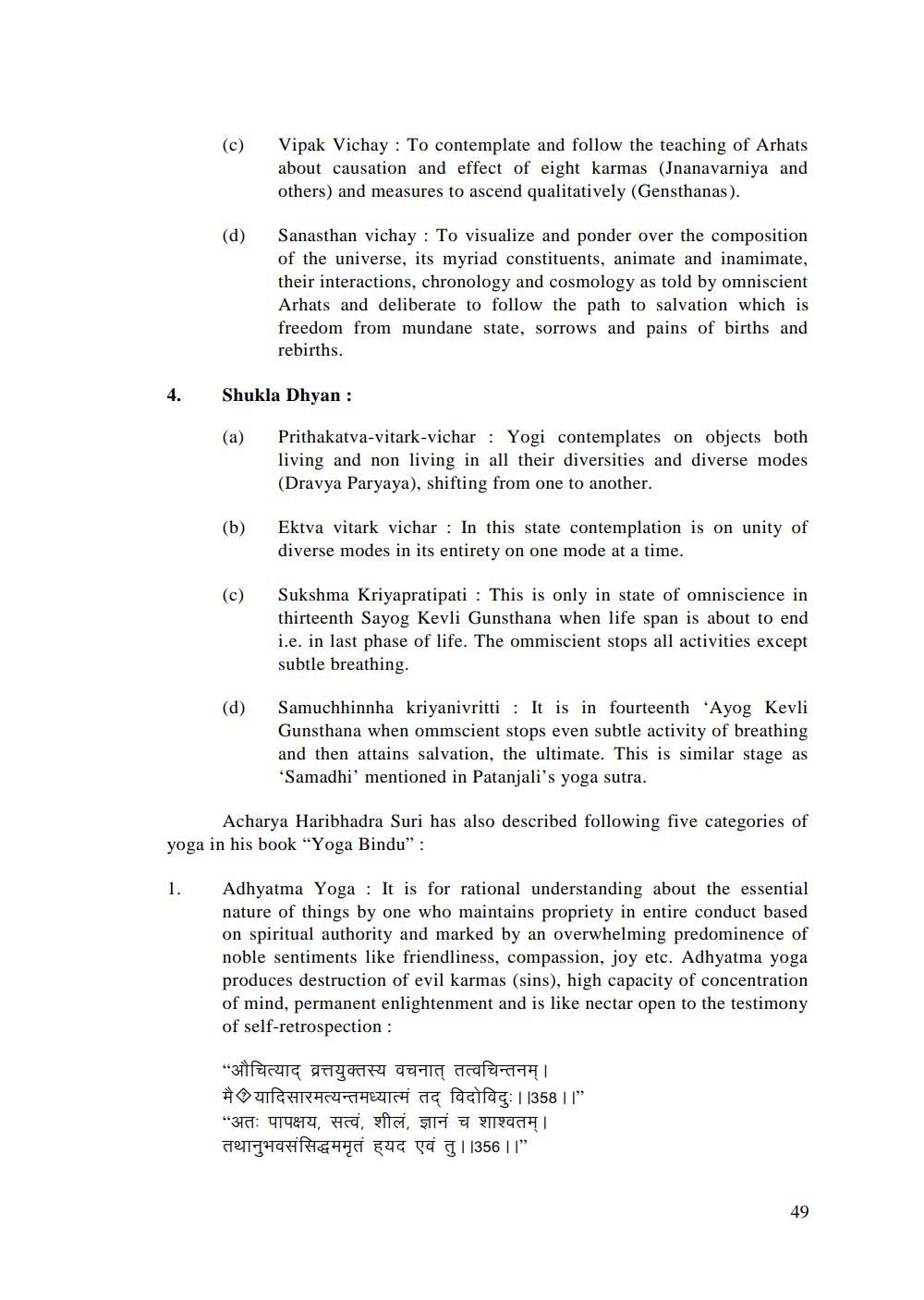________________
(c)
Vipak Vichay : To contemplate and follow the teaching of Arhats about causation and effect of eight karmas (Jnanavarniya and others) and measures to ascend qualitatively (Gensthanas).
(d)
Sanasthan vichay : To visualize and ponder over the composition of the universe, its myriad constituents, animate and inamimate, their interactions, chronology and cosmology as told by omniscient Arhats and deliberate to follow the path to salvation which is freedom from mundane state, sorrows and pains of births and rebirths.
Shukla Dhyan :
(a)
Prithakatva-vitark-vichar: Yogi contemplates on objects both living and non living in all their diversities and diverse modes (Dravya Paryaya), shifting from one to another.
(b)
Ektva vitark vichar : In this state contemplation is on unity of diverse modes in its entirety on one mode at a time.
(c)
Sukshma Kriyapratipati : This is only in state of omniscience in thirteenth Sayog Kevli Gunsthana when life span is about to end i.e. in last phase of life. The ommiscient stops all activities except subtle breathing.
(d)
Samuchhinnha kriyanivritti : It is in fourteenth 'Ayog Kevli Gunsthana when ommscient stops even subtle activity of breathing and then attains salvation, the ultimate. This is similar stage as 'Samadhi' mentioned in Patanjali's yoga sutra.
Acharya Haribhadra Suri has also described following five categories of yoga in his book “Yoga Bindu":
1.
Adhyatma Yoga : It is for rational understanding about the essential nature of things by one who maintains propriety in entire conduct based on spiritual authority and marked by an overwhelming predominence of noble sentiments like friendliness, compassion, joy etc. Adhyatma yoga produces destruction of evil karmas (sins), high capacity of concentration of mind, permanent enlightenment and is like nectar open to the testimony of self-retrospection :
“औचित्याद् व्रत्तयुक्तस्य वचनात् तत्वचिन्तनम् । À NICHTHYTTETTH AG facilag: 11358 II" "अतः पापक्षय, सत्वं, शीलं, ज्ञानं च शाश्वतम् । Geithyd yg ga II 1356 II"
49




